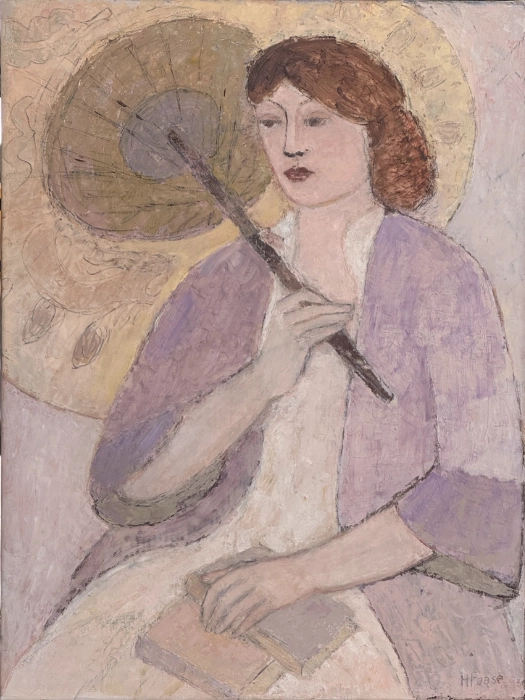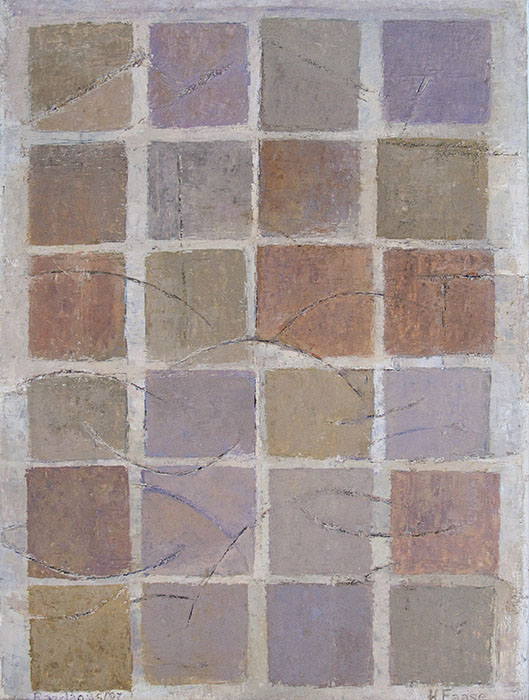Introduction
"
... One of the most interesting polarities in Art is between representation, as one end of the stick,
and abstraction at the other end,
and I’ve found my-self all over that stick. ... "
The art of painting has become such a wide-ranging concept that many of us are at a loss. Nowadays one cannot work anymore in an acknowledged tradition or style as before. Traditional pictorial values are of no use anymore and there is no general accepted visual vocabulary with which artists can find their way.

Woman with parasol and books
Individual emotions and thoughts are not enough. One needs a framework to work with. For me this means looking at the past. By studying the masters of the past, one learns to distinguish the different working methods, e.g. the use of light-dark or colour. For example the work of Titian and Rubens. By the many copies, which Rubens made after Titian, it is possible to examine the difference in the use of colour and the concept of light-dark.
A similar process as in the work of Titian and Rubens you see in the paintings of Pissarro and Cézanne. Occasionally Cézanne chooses a painting of Pissarro as a starting point, to transform it with colour and structure. It’s a different visual concept. Cézanne changes the Impressionist-atmospheric view of Pissarro into a dynamic interplay of planes and colours.
The developments and changes in the 19th-20th century, put an end to a long tradition of the narrative in the art of painting. There is no definition anymore of what painting should imply, other than form, line and colour.
With these experiments the framework of tradition and references disappeared. What left is the question: how to make an interesting painting. For example how to handle pictorial space, one of the most important things in painting. The interaction between planes and colours can create an visual idea of space without the use of perspective. By a dynamic structure of horizontals en verticals Mondrian made this idea of space visible. In his many writings he uses the term 'dynamic equilibrium'.

Yerevan, Armenië
His work is very consistent. An abstraction that hardly can be developed any further. Or it may be considered as a 'dynamic equilibrium', which could serve as a starting point for depicting space on a flat surface.
My work is based on these kinds of thoughts. By studying tradition and modernity I try to find out how to deal with this and how to make an interesting painting.
Finally, some personal data.
Born in Reeuwijk (1945). Art Academy, The Hague (1970-1974). Fifteen years living
abroad with partner (1985-2001), first in Nicaragua, later in the Near and Far East.
Since 2001 back in the Netherlands and working to complete/coninue the work, which I started in the
various countries.